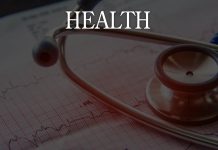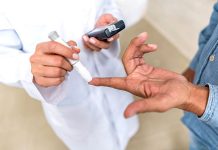By James McGuinness, M.D. |
The Centers for Disease Control and Prevention (CDC) have designated next month as National High Blood Pressure Education Month. This is intended to raise awareness regarding the impact which high blood pressure can have on your overall health.
Hypertension increases the risk of serious health conditions such as cardiovascular disease and stroke. According to the CDC, heart disease was the most common form of death in the U.S. in 2015. Some other risk factors associated with high blood pressure include congestive heart failure, diabetes and kidney disease.High blood pressure can have a huge impact on a person’s life. During 2007 more than 46 million people in the U.S. visited a health care provider for this condition.
Overall, the incidence of high blood pressure is about the same in men and women. However, there are gender differences between age groups. In people under the age of 45, the incidence of high blood pressure is higher in men, while in the over-65 year age category it is higher in women. There are also race differences. High blood pressure is more common among African-Americans than Caucasians.
In the U.S. approximately 1 in 3 adults have high blood pressure, but children can also have high blood pressure. Elevated blood pressure often has no signs or symptoms. Many people with high blood pressure don’t even know they have it. It can develop slowly over time and can have many causes. Although it usually cannot be cured, it can be managed very effectively through lifestyle changes and, when needed, medication.
Various lifestyle factors may contribute to high blood pressure. It is well documented that high levels of sodium – salt – can be linked to high blood pressure. In the U.S., the majority of people consume more than twice the level of recommended sodium. Guidelines recommend up to 2,300mg of sodium per day for an adult. Those at higher risk should consume even less – up to 1,500mg of sodium a day. The average intake of sodium is about 3,400 mg, most of it coming from processed foods.
People with diabetes and kidney disease are also at risk. It is recommended that those without kidney disease eat potassium-rich foods that can help to lower blood pressure, including fish, green leafy vegetables, bananas, citrus fruits and potatoes.
Several factors beyond your control may increase your risk for high blood pressure, including your age, sex and race or ethnicity. You can work to reduce your risk by eating a healthy diet, maintaining a healthy weight, not smoking, decreasing or quitting alcohol intake and being physically active. There are many affordable blood pressure monitors available that will make it easier to monitor your blood pressure at home.
In 2017, newer high blood pressure guidelines were published by the American Heart Association and American College of Cardiology which lowered the definition of hypertension.
Normal blood pressure is considered less than 120/80 mm Hg. Stage 1 hypertension is now defined as starting when the systolic blood pressure is between 130-139 or the blood pressure is between 80-89 mm Hg.
A hypertensive crisis is when systolic is over 180 and/or diastolic over 120; those patients need prompt changes in medication and/or immediate hospitalization if there are signs of organ damage.
The 2017 guidelines eliminate the category of prehypertension, categorizing patients as having either Elevated (120-129 and less than 80) or Stage I hypertension (130-139 or 80-89). While previous guidelines classified 140/90 mm Hg as Stage 1 hypertension, this level is classified as Stage 2 hypertension under the new guidelines.
In addition, the guidelines stress the importance of using proper technique to measure blood pressure; recommend use of home blood pressure monitoring using validated devices; and highlight the value of appropriate training of health care providers to reveal “white-coat hypertension.”
As with any disease, it’s important to discuss the pros and cons of strategies with your health care professional concerning the most appropriate ways to reduce your risk for high blood pressure. If you have high blood pressure, your doctor may prescribe medication. Lifestyle changes, such as the ones listed above, can be just as important as taking medicines.
“The natural healing force within each one of us is the greatest force in getting well.”
– Hippocrates
James McGuinness, M.D., is a family physician in Middletown, and is the medical director of the Parker Family Health Center in Red Bank.
This article was first published in the Apr. 5-12, 2018 print edition of the Two River Times.














